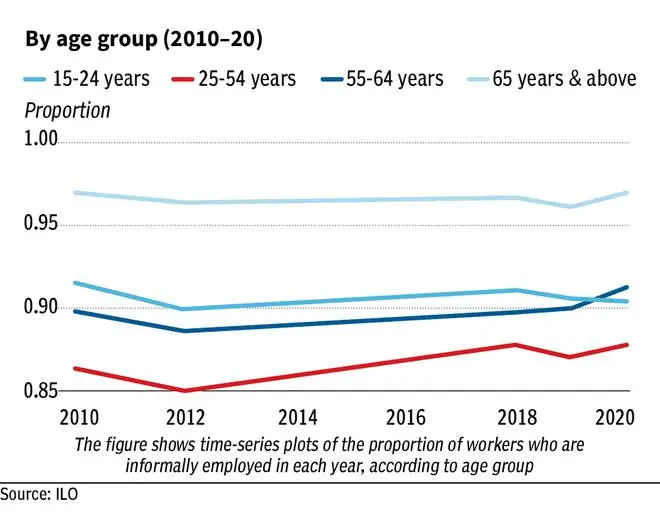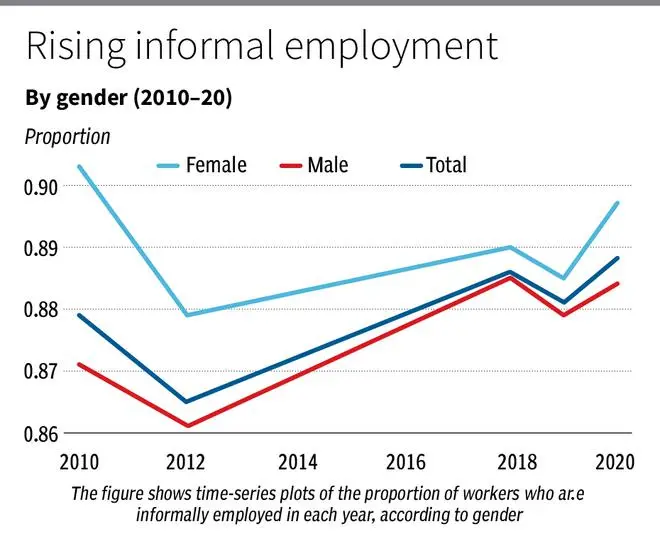India has one of the lowest labour force participation rates in the world and the lack of formal employment opportunities may have ramifications for long-term human capital development in the country. Discouragement of people from entering the workforce because of a perceived lack of opportunities will lead to a vicious cycle, according to the International Labour Organization’s (ILO).
ILO’s recent policy brief titled ‘Skills development and lifelong learning in India- challenges for trade unions’ expresses concern over high informal employment in India.
“An overwhelming proportion of workers are in informal employment. With nine in ten workers employed in the informal economy, this is a severe challenge for policymakers. Such workers are often invisible to the system and are at increased risk of exploitation” the policy brief states.

For workers aged 65 and older, the proportion in informal employment is in an excess of 96 per cent, the highest among age groups. In general, the rates of informal employment tend to be higher among youths (aged 15–24) than for other age groups, except those older than 65 years.
Since 2010, the proportion of informal employment among male youths has remained at more than 90 per cent. At the same time, there has been the sharpest fall in informal employment for female youths. This has resulted in a decline in the rate for all youth workers.
Chronic youth unemployment
“While unemployment rates have remained relatively stable, India suffers from chronic youth unemployment” the ILO states. Since 2012, more than a fifth of youths (aged 15–24) has been unemployed. In 2020, the youth unemployment rate leapt to 25 per cent.
“Of even greater concern is the fact that the hardest hit by unemployment are youths with advanced educational qualifications. The third of youths in this group who were unemployed in 2020 highlights the crisis with job creation in the Indian economy” the ILO added.
Nearly one-third of youths in India are not in employment, education or training (NEET). The gender difference among youth NEET is also one of the widest in the world, with roughly one in two female youths in that category. The large and steadily growing proportion of youth NEET seems alarming, ILO added.
Quality Training
ILO has expressed concern over the quality of training even as it is essential and much needed considering the huge number of people involved in the informal sector.
The eleventh Five-Year Plan warned that the increase in employment under the two preceding plans had been due to growth in informal employment.

The National Skill Development Policy 2009 listed the intention to expand formal employment adding that it is fiscally attractive and amenable to financing innovations. The policy paper highlights a review of existing legislation that encourages informal and unorganized employment.
“More than a decade later, however, the Ministry of Skill Development and Entrepreneurship continues to identify this as an important challenge” the ILO policy brief adds.







Comments
Comments have to be in English, and in full sentences. They cannot be abusive or personal. Please abide by our community guidelines for posting your comments.
We have migrated to a new commenting platform. If you are already a registered user of TheHindu Businessline and logged in, you may continue to engage with our articles. If you do not have an account please register and login to post comments. Users can access their older comments by logging into their accounts on Vuukle.